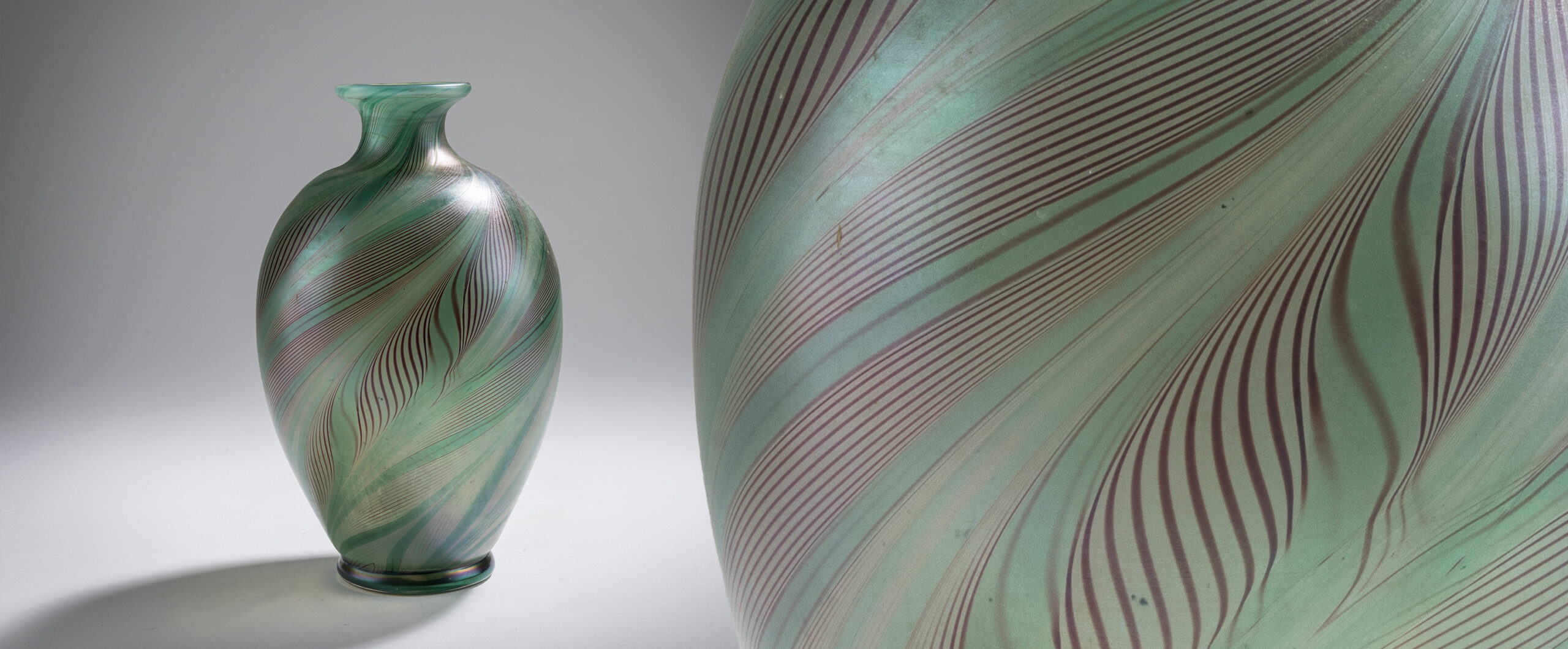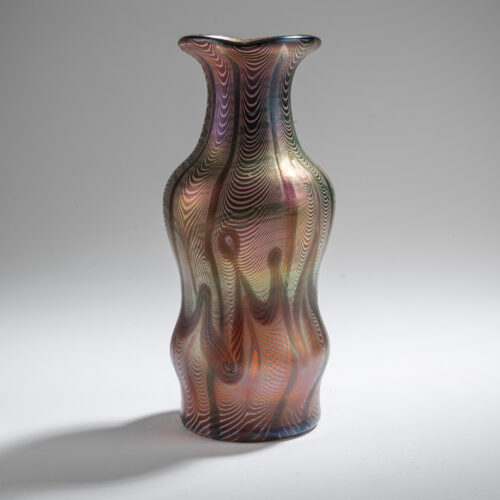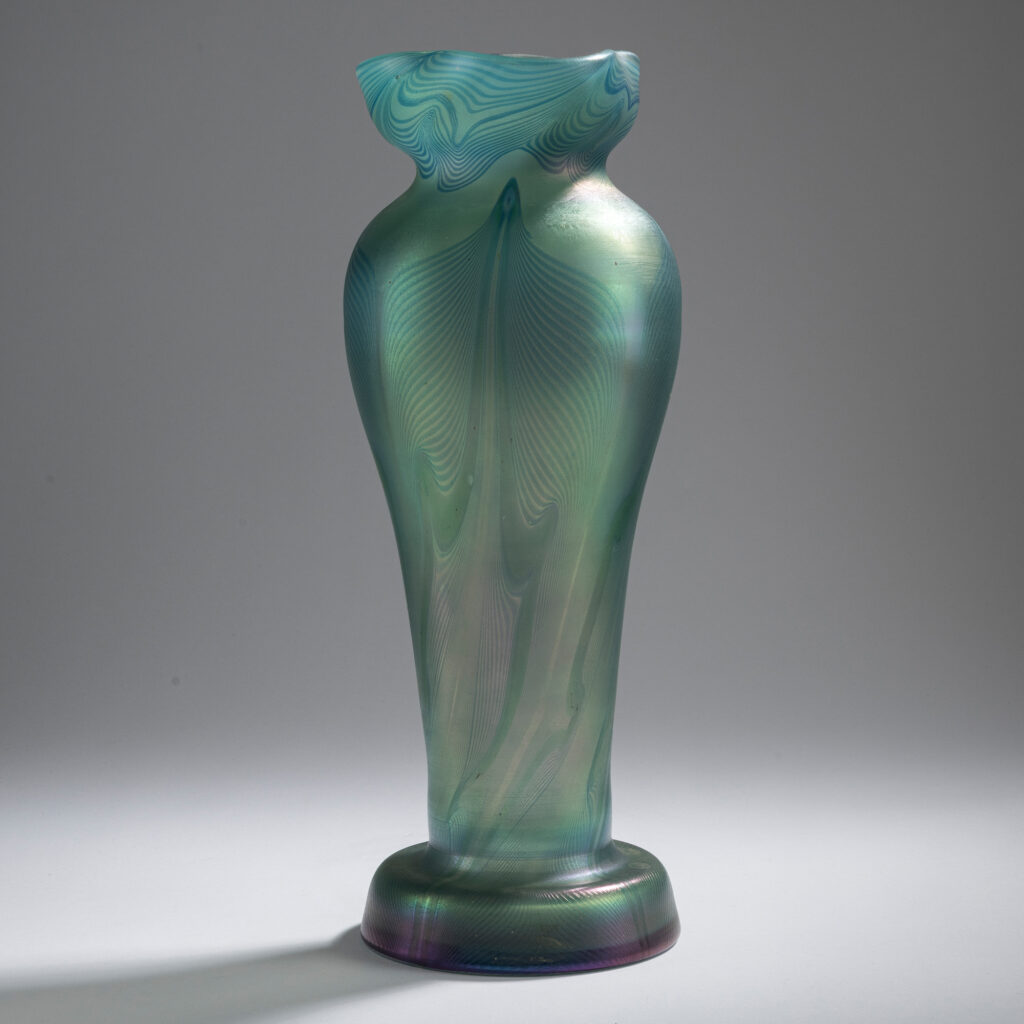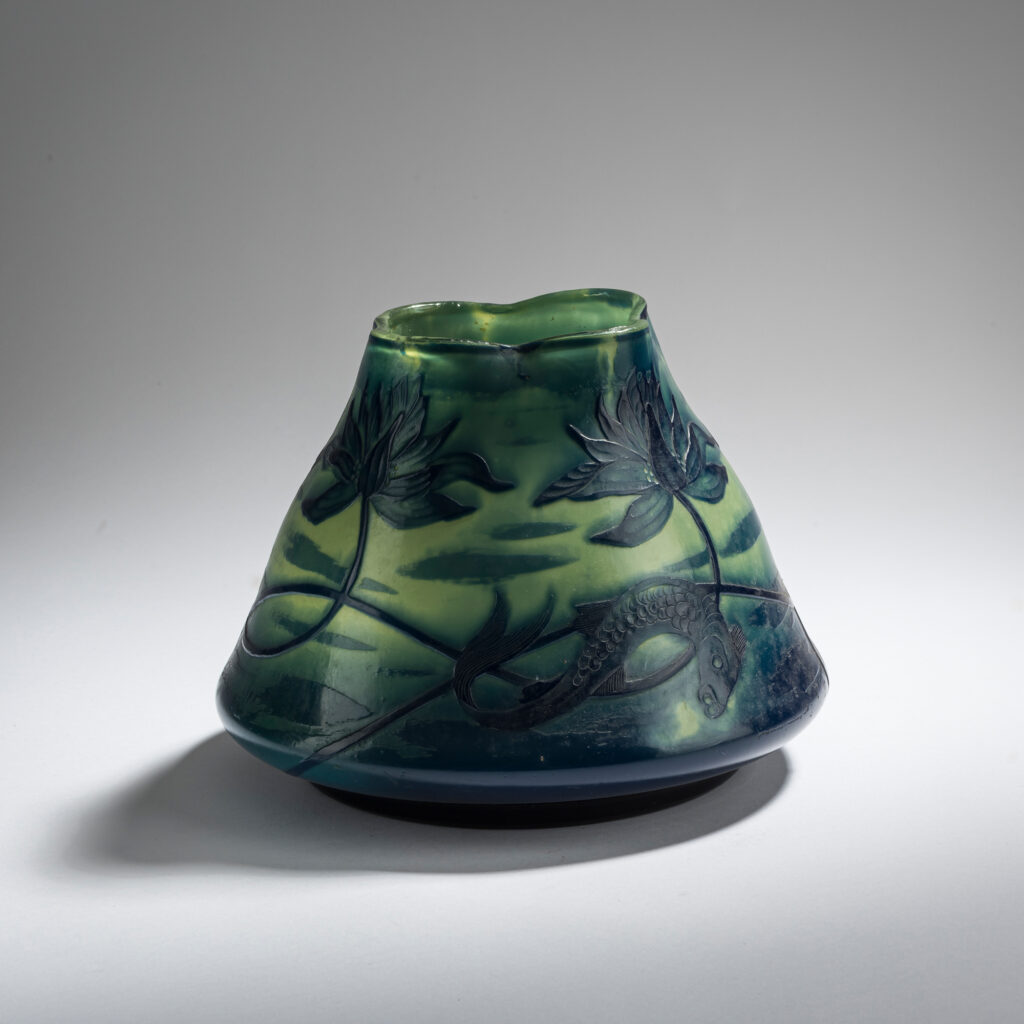
Karl Schmoll von Eisenwerth’s glasses
for the Ferdinand von Poschinger Glassworks
From a private Art Nouveau collection come the glasses presented on the following pages from the Glashütte Ferdinand von Poschinger, which the art lover collected over a period of several decades. Among them are some lustrated vases with finely combed thread decoration and peacock feather decoration, designed by the artist Karl Schmoll von Eisenwerth, which appear very rarely on the art market.
The glassworks of Ferdinand Poschinger in Buchenau in the Bavarian Forest was one of the leading manufactories able to produce art glass with modern lustrated decorations around 1900. Louis C. Tiffany had set new standards in the field of art glass with his designs at the world exhibitions.
At the Ferdinand Poschinger Glashütte, the important Art Nouveau painter Karl Schmoll von Eisenwerth (1879-1947) was one of the artists, along with Hans Christiansen and Julius Diez, who successfully introduced Art Nouveau forms into the production of art glass. Ferdinand von Poschinger, who took over his inheritance in 1881, was open to everything new. He ensured that his estate had a better infrastructure, was connected to the railroad network, and supplied the town of Buchenau with electricity throughout the area. Under his leadership, the Buchenau and Spiegelhütte glassworks took part in numerous international exhibitions – in 1893 at the World’s Fair in Chicago and in 1900 at the World’s Fair in Paris.
Karl Schmoll von Eisenwerth stayed in Buchenau regularly from 1900 to 1914, at least once a year, to create art glass.
Poschinger’s collection for the Paris World’s Fair, which was awarded a silver medal, consisted, among other objects, of fashionable glassware with combed around decoration in the style of Tiffany (cf. Höltl (ed.), Das Böhmische Glas, vol. V, Passau 1995, p. 18). A wonderful example of this is the tall vase in the form of an elongated flower capsule in a light blue ground tone (Cat. No. 300) with light purple and green combed threads and mother-of-pearl shimmer. Based on the elaborate signature, this example is most likely one of those vases made for the World Exhibition in Paris (cf. Höltl (ed.), Das Böhmische Glas, vol. V, Passau 1995, no. V. 14).
Art glass was highly valued in the Poschinger glassworks. The best designs were created as unique pieces or in very small editions, which were signed and numbered. In contrast to the strongly metallic iridescent glasses from the Joh. Lötz Wwe. glassworks with their often expressive iridescent threads, the emphasis at Poschinger was on a harmonious overall impression with delicate, soft colors. Symmetrical feather-like forms dominate, which are also taken up again but varied in the areas of the stand and muzzle.
Karl Schmoll von Eisenwerth also experimented with cast glass, etching and cutting techniques, as well as the ‘Marqueterie de Verre’ technique mastered by Emile Gallé, in which glass parts are joined together with a base. Schmoll’s ‘French style’ is evidenced by a vase with a surrounding pond landscape (Cat. No. 309) , which was made using etching and cutting techniques. Splendid lotus blossoms in dark blue against green hues appear above a water surface with fish.



